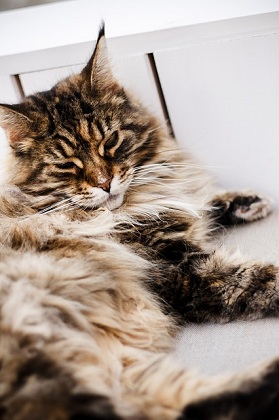Symptoms of FIP
Symptoms of FIP
Feline infectious peritonitis (FIP) is the infectious disease caused by a feline coronavirus that mutates to feline infectious peritonitis virus (FIPV). According to feline experts, FIP is usually fatal and affects the cat, which immune system is suppressed. Therefore, young kittens, cats diagnosed with feline leukemia, and geriatric cats are at risk to develop FIP. Furthermore, it has been suspected that certain cat breeds such as Persians as well as other Asian cat breeds are genetically prone to FIP. However, feline experts are not still sure what causes the mutation of infection with coronavirus to deadly FIP. They have noticed that cats who live in large groups like in shelters and catteries. In a majority of cats that are kept at home as pets, FIP is a rare disease. Experts differ two forms of the disease – effusive or wet form and non-effusive or dry form. The wet form is common and is present in 70 percent of cats infected with FIP. It gets its name because of accumulation of water in the cat’s belly or lungs. The dry form is not thus aggressive, but is equally deadly. Dry form leaves a cat more time to live and discover the disease. However, the most difficult thing with FIP is its symptoms. Namely, cats can hide the mild symptoms, but they cannot hide when the FIP progresses too far. For that reason, the infection cannot be treated properly, and when it mutated to FIP, it is usually too late. To find out more about the symptoms of FIP, the article “Feline Infectious Peritonitis” gives us the following list.
Symptoms of FIP
Cats that have been initially exposed to the feline coronavirus usually show no obvious symptoms. Some cats may show mild upper respiratory symptoms such as sneezing, watery eyes, and nasal discharge. Other cats may experience a mild intestinal disease and show symptoms such as diarrhea. Only a small percentage of cats that are exposed to the feline coronavirus develop FIP-and this can occur weeks, months, or even years after initial exposure.
In cats that develop FIP, the symptoms can appear to be sudden since cats have an amazing ability to mask disease until they are in a crisis state. Once symptoms develop, often there is increasing severity over the course of several weeks, ending in death. Generally, these cats first develop nonspecific symptoms such as loss of appetite, weight loss, depression, rough hair coat, and fever.
There are two major forms of FIP, an effusive, or “wet” form, and a noneffusive, or “dry” form. Generally, cats will exhibit the signs of the noneffusive form FIP more slowly than the effusive form. Symptoms generally include chronic weight loss, depression, anemia, and a persistent fever that does not respond to antibiotic therapy.
The effusive form of FIP is characterized by an accumulation of fluid in the abdomen, or less commonly in the chest. Early in the disease, the cat may exhibit similar symptoms to the dry form, including weight loss, fever, loss of appetite, and lethargy. The wet form of the disease often progresses rapidly, and the cat may quickly appear pot-bellied due to fluid accumulation in the abdomen. When the fluid accumulation becomes excessive, it may become difficult for the cat to breathe normally.
It has also been observed that male cats are more inclined to get FIP. The disease is usually transmitted through face-to-face contact. It is because coronavirus can live up to seven days in the outer environment. The other ways of its transmission are by feces or by using the same food bowls. For that reason, keeping cat’s bowls and litter box clean and disinfected can greatly prolong the lives of our beautiful pets.










